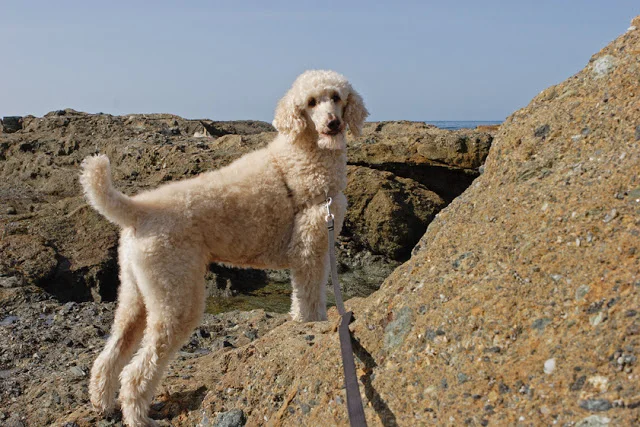Elsa doing a very nice "leave it" for demonstration purposes.
The "leave it" exercise is one of the most useful things that you can teach your dog. The "leave it" behavior is typically taught for leaving food items; but once your dog is accomplished at it, you can use it for anything. Personally I have used it for gross items found on the ground during a walk, babies, bees, retrieving items, toys that do not belong to my dogs and so much more.
Imagine if you could tell your dog not to touch an item and they didn't. No pulling, no yanking, no yelling? Wouldn't that be the greatest thing ever? Well, it is up there with some of the greatest things ever, for sure.
Showing off their "leave it" skills.
The "leave it," behavior, like most other behaviors is a progression of steps to get to a solid and reliable response. Once your dog has it down and if you have used it extensively; it is often not needed in certain situations. Dropping food off of the counter, table or hand can become a non issue once they understand that you control the items.
The big secret to teaching a solid "leave it" is to reward it. The exercise begins with a low level food item like toasted o cereal (cheerio type). The food that is used to reward the dog should be of equal value. So don't tell them to leave a piece of steak and then give them a cheerio for not touching the steak. They are very smart and will soon be going for the steak faster and sneakier. Makes sense right?
- Put Cheerio in your open hand and cover with your thumb.
- They will NEVER be receiving the food in the hand that you have the cheerio. You do not want them to think that at some point they will get the food in your hand.
- Tell your dog to "leave it" and put your hand out. They will typically try to get the food for a while but do not let them pry it out from under your thumb.
- As soon as they pull away from your hand for a split second, mark the behavior and reward with a cheerio from your other hand. At the same time pull the lure hand back beside you.
- Do this as many times as it takes for them to "get" that moving away from your hand is what gets them the reward.
- This requires a great deal of patience.
- Be sure to tell them to "leave it" before you place your hand out. Give them a heads up.
- Try doing it with your hand on the floor, then put the food on the floor with your hand hovering over it. NEVER let them get the item that you have told them to leave.
- As they become more solid with the "leave it" you can get further and further from the item.
- Once they are super star professionals at "leave it" you can drop food from your hand and then the counter top; always rewarding them for not touching the item. Don't forget to tell them to "leave it" before dropping the food.
Now that they are amazing at "leaving it" you can use it for anything that you don't want them to touch.
Remember to only make the exercise harder when they have complete success as each step. Too much challenge can mean failure. Best to take baby steps during the process.




